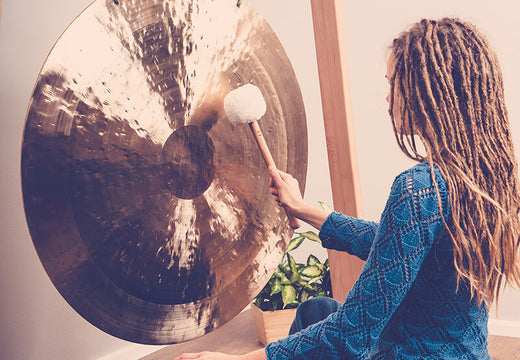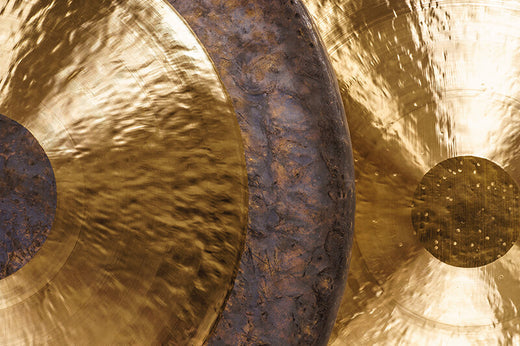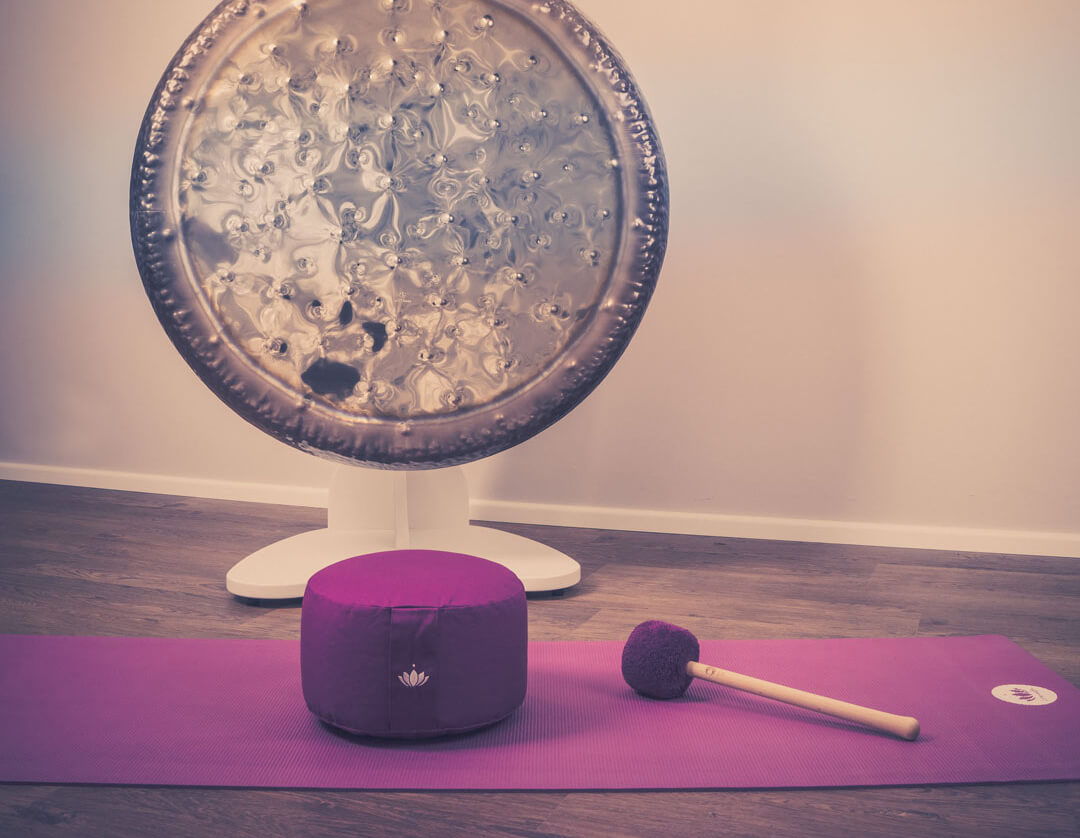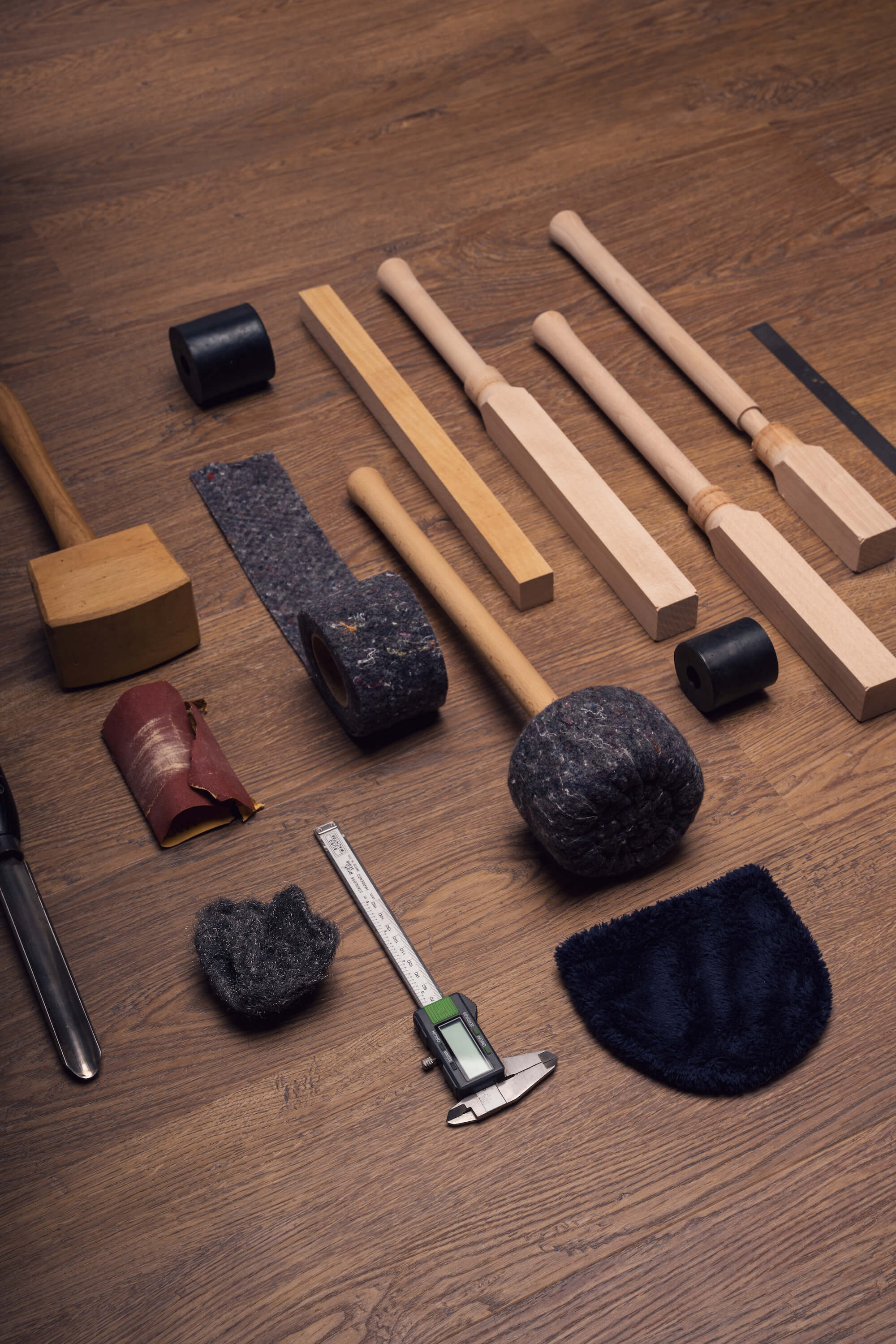The sound game with the gong offers a fascination all of its own. If you want to play the gong for the first time or are just learning how to strike the gong correctly, you may be faced with one or two challenges. Of course, it also depends on your individual expectations: Do you want to learn to play the gong in order to play professionally in an orchestra or is playing the gong more of a hobby? For therapists, meditation teachers, yoga enthusiasts or alternative practitioners in particular, the gong is an ideal instrument to combine with their own profession. It is therefore definitely worth taking a closer look at the various playing techniques and getting to know the different facets of the sounds that are possible when playing the gong.
What is important when you want to play a gong?
First of all, you should prepare for your gong playing. How a gong is played depends primarily on the type of gong, of course - but the location of the gong, the choice of the right mallet and the type of sound must also be thought through in advance.
Placement in the room
To create the best possible sound, your gong needs enough space. The vibrations that spread through the room when you play the gong must not be distorted by other objects - it therefore makes sense to place the gong as centrally as possible in the room and leave enough space for the pleasant sounds to fully unfold.
Choice of the gong mallet
The sound of the gong is also significantly influenced by the gong mallet or gong mallet. Quality is the most important factor here: To achieve the different sound frequencies, you should choose a gong mallet that has been specially created for this type of gong. Inferior mallets often produce a disturbing striking noise, which has a negative effect on the sound. As each mallet produces its own sound, you should have a selection of different gong mallets to choose from. This way you can always decide for yourself which sound best suits your mood. Most mallets consist of a wooden or metal handle. Metal handles are often made of lightweight aluminum. The handles of Olli Hess gong mallets are made almost exclusively from beech wood and then sealed with organic wax. Thanks to the ergonomically shaped handle, our mallets are always comfortable to hold when playing. The head of the gong mallet is usually made of felt or caoutchouc and is also covered with a very soft fiber, such as fleece. The special thing about Olli Hess gong mallets is that almost all of our mallets are completely vegan from head to handle. We offer a large selection of different mallets, so you are guaranteed to find the right model for your requirements. Tip: When choosing the right mallet, the weight is also important. Especially if you often play the gong professionally or as part of a therapeutic program, the duration of the sound playing can be very long. A light mallet will take a lot of strain off your wrist.
How is the gong played?
Basically, playing the gong is very simple. Every strike on the gong automatically produces a sound. However, if you want it to be harmonious and intense, the playing style needs to be much more adapted. Before you actually start playing the gong, you should warm up your instrument a little. To do this, tap your gong a few times with the gong mallet so that it can adjust acoustically. Be careful not to hit it too hard, as no audible sound should be produced when warming up. Instead, inconspicuous vibrations are released here, which should make the sound of the gong softer and brighter. After warming up, you can choose between different striking techniques or rubbing the gong. Both variants produce their own sound and therefore their own frequencies. With enough practice, you will quickly find out which variant you like better or which suits the respective application method.
Finding the right attachment points on the gong
The sound produced by the gong strike depends largely on the zone in which you strike the gong. With both the classic flat gong and the humpback gong, there are three different zones that you can play: The center of the gong, the outer ring and the direct edge. Each of these zones gives you a different sound and different frequencies. The art of playing the gong therefore lies above all in finding the right interplay between the three playing zones. To do this, you should first take a look at the tones that can be produced in the different zones of the gong: The center of the gong Very low tones are produced in the center of the gong, which form the basis of gong playing and make up the special mystique of the instrument. This area is mainly played and builds up the frequencies. The ring of the gong Brighter tones are produced in the ring of the gong, which are also known as overtones. These frequencies loosen up the sound of the gong somewhat. The outer edge You can also produce beautiful tones at the edge of the gong. Basically, the further out the sound play is, the higher the frequencies will be. The edge of the gong is therefore the right choice for creating beautiful contrasts to the low center.
Rubbing the gong - the alternative to hitting the gong
In classical meditation, the gong is rubbed rather than struck. This naturally means that less impressive pitches are possible. Instead, however, the gong emits much calmer frequencies, which can have fantastic results, especially during relaxation exercises or therapeutic sessions. The advantage: when rubbing the gong, much less force is required, meaning that longer sessions or meditations can be carried out without any problems. If you want to learn how to play the gong, you should definitely try rubbing the gong. But be careful: if you want to rub the gong, don't use a conventional gong mallet. Instead, use what is known as a gong mallet, which has a round head and a very light handle to produce a beautiful sound. When rubbing the gong, the soft surface on the head of the friction mallet is gently guided over the surface of the gong, producing very soft tones. These frequencies are usually used for meditation as they are reminiscent of the meditative Om mantra.
Find out which gong game suits you best
Basically, there are no rules to playing the gong. If you don't want to perform as part of a professional orchestra, you can play the gong just as you like. Take enough time to fully immerse yourself in playing the gong and explore all the techniques that make for a pleasant sound. You can vary between strike and rubbing the gong yourself to explore the frequencies that each of these exercises entails. Over time, a harmonious interplay will develop all by itself, combining all facets and offering you a meditative and relaxing moment. The high-quality gongs, gong mallets and friction mallets from ollihess are always at your side on this adventure with quality, durability and great attention to detail, helping you to explore the entire sound world of gong playing.





